‘Plasma Donation: Corona Patients can be Corona Warriors’
Dr. Smriti Sharma,
Assistant professor,
Miranda House, University of Delhi-110007
1. COVID-19: The Background
The world is reeling under the impact of COVID-19 with the World Health Organisation (WHO) declaring SARS Cov-2 /COVID-19 as a pandemic due to its high mortality and extraordinary basic reproduction number. According to the World Health Organization, there have been greater than 8 million confirmed cases of COVID-19 as on June 17, 2020. All over the globe, scientists, researchers, doctors and academicians are trying to find a cure for this disease.
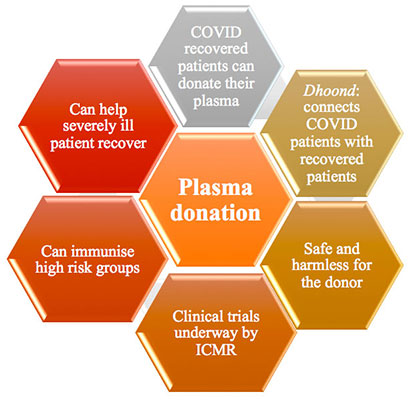
Figure 1 shows the distribution of COVID-19 cases in the last 7 days. It is estimated that it would take approximately 12-18 months to develop a successful vaccine candidate if the process goes smoothly from conception to market availability. Some western, traditional therapies can provide comfort and lessen the symptoms of a person suffering from mild COVID-19 but currently, there is no known cure against the virus. There is no cure for this novel virus presently, but there is a way that gives hope to critically ill patients of COVID-19 and that is ‘plasma donation’.
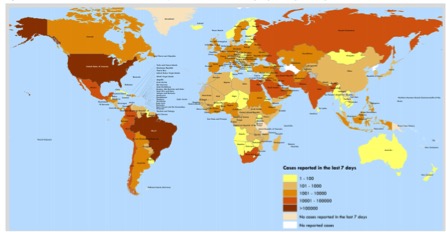
Figure 11: Distribution of COVID-19 cases in the last 7 days
2. Plasma donation: A new hope for corona patients:
If a person fully recovers from COVID-19, he/she can help patients who are suffering from COVID-19 infection by donating his/her plasma. This is because once a person recovers, the plasma will contain COVID-19 antibodies which can help the immune system of a patient to fight the virus. Also, this therapy can also be used to immunise those groups that are at a high risk of contracting the virus such as health workers and families of patients.
3. How Plasma therapy works?
To understand the mechanism of plasma therapy, we need to understand what convalescent plasma is. It is the liquid part of blood that is collected from patients who have recovered from the novel coronavirus disease, COVID-19, caused by the virus SARS-CoV-2. These patients develop antibodies in the blood against the virus. Antibodies are proteins that might help fight the infection. Some conditions have to be fulfilled before a patient can be a candidate for plasma donation. The person interested in plasma donation must have had a prior diagnosis of COVID-19 documented by a laboratory test and should meet other donor criteria. There should be complete resolution of symptoms for at least 14 days prior to donation. Moreover, a negative lab test for active COVID-19 disease is not necessary to qualify for donation.
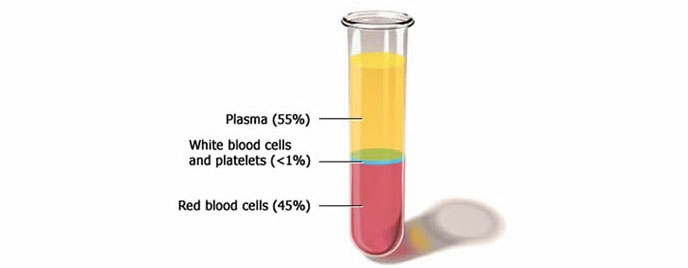
Figure 12 : Components of blood
In plasma donation, blood is removed from the body, blood cells and plasma are separated, and then the blood cells are returned while the plasma is collected and frozen to preserve. This preserved plasma can be then donated to an ill patient. This is done for curing various diseases and right now being explored for its use in recovery of COVID-19 patients.
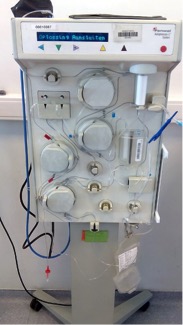
Figure 26: Plasmapheresis machine
4. Status of Plasma Donation in India:
Just like all over the world, convalescent plasma is being investigated with lots of hope for the treatment of COVID-19 in India also. Recently, the capital of India, Delhi, reported the country's first plasma therapy success when a 49-year-old man who received treatment was taken off ventilator support. The use of plasma therapy to treat Covid-19 cases has a very sound theoretical base but a lot of research is still required. The team of Dadhichi Deh Dan Samiti spoke with Dr Vinod K Malik form Sir Ganga Ram Hospital, New Delhi, India. He stressed on the importance of being cautious amid the optimism for plasma therapy as additional studies are required to determine if convalescent plasma is safe and effective to treat COVID-19. Factors like the effect of convalescent plasma on shortening the duration of illness, reducing the morbidity and preventing death associated with COVID-19 have to be investigated in detail. Also, it is very important to find the stage of illness at which the donated plasma has to be transferred to a patient having coronavirus disease to maximise the efficiency of the transfer. Because of this, Indian Council of Medical Research (ICMR) has already started clinical trials across the country to assess plasma treatment and its effectiveness. These clinical trials require permission from the drug control authority as it involves relaxation in blood donation rules.
NEWS
Delhi Health Minister Satyendar Jain given plasma therapy - recovers
Satyendar Jain was tested positive for Covid on 17 June and administered plasma therapy after his condition deteriorated. Sources said his Covid test came out negative Friday.
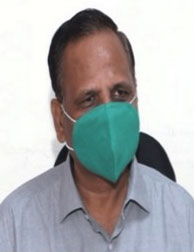
New Delhi: Delhi Health Minister Satyendar Jain was on Friday discharged from the Max Hospital here after he tested negative for COVID-19, sources said.
Jain, who was administered plasma therapy, had tested positive for COVID-19 on June 17, a day after he was admitted to the Rajiv Gandhi Super Speciality Hospital (RGSSH) with high-grade fever and a sudden drop in oxygen levels.
The 55-year-old minister was shifted to the ICU of Max Hospital, Saket, on June 19 after his condition worsened. “He has tested negative for COVID-19 and has been discharged from hospital,” a source said.
Jain was moved out of the ICU of the dedicated COVID-19 facility on June 22, two days after he was administered plasma therapy.
5. Plasma donation: A Corona warrior’s experience:
Many patients have come forward to share their story of plasma donation. One such woman (name withheld) says after recovering from the novel coronavirus and completing the 14-day home isolation period, she received a call from a doctor who told her that they wanted to extract plasma from her. The doctor explained to her that no danger of any kind was involved as now that she has recovered, her body has developed antibodies to fight the coronavirus. She says the confidence of the doctors made her very positive about the whole donation process and her parents were also encouraging about it. The doctors explained to her the whole procedure as in how plasma will be extracted from her blood and will be injected into the body of a COVID-19 infected patient. The process of donating plasma to treat COVID-19 is not very complex and can be done in just two hours.
6. Some important information regarding Plasma donation:
To enable the search for plasma donors more systematic, the Delhi government has inaugurated India’s first plasma bank at Institute of Liver and Biliary Sciences (ILBS) in Delhi. This is India’s first Plasma Bank for critical Covid-19 patients. Doctors from Delhi government will call to check eligibility and give time to come to ILBS to donate.

Donor will get Gaurav Patra (appreciation Letter) and get taxi or reimbursement for travelling to ILBS. It will take around 1 hour to donate plasma after basic testing. To get plasma, patient needs to come to the hospital with doctor’s prescription.
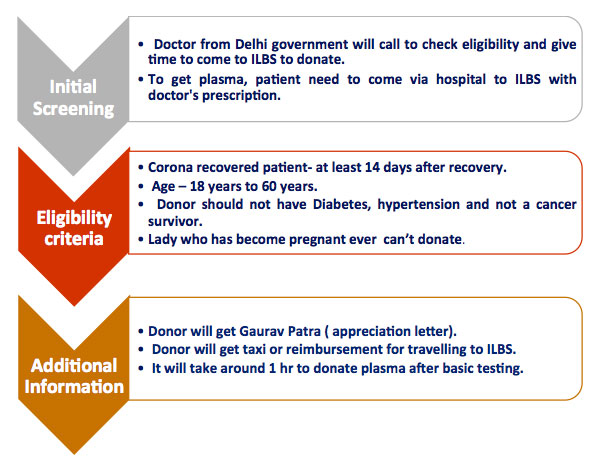
Dhoondh: A brilliant initiative: Dhoondh is a website started by a family in Delhi, who realised the importance of a database of potential plasma donors after struggling with looking for plasma donors for their father (who has now recovered from COVID).

This site connects current COVID patients with recovered COVID patients who wish to donate plasma. Whether you are a donor or a recipient one has to register by filling in some details such as contact details, location, blood group etc. The details provided will be used to match recipients with that of the donor. Once the donors are identified who are closest to the recipient and who have the right blood group, a list with each other’s details is sent to both recipient and donor.
7. Conclusion:
Doctors are now appealing to all the patients who have been cured to donate plasma in maximum numbers. Sad is to know is that lot of stigma is attached to this disease and people have lot of misinformation. There are myths such as catching it again if one goes to the hospital to donate plasma and some recovered patients feel that they are already weak after the illness so extraction of plasma may lead to further weakness. All these fears are unfounded according to the doctors. One must understand that it takes only the pain of a needle prick to donate blood that is rich with antibodies. We must realise that plasma donation is a great contribution to fight the coronavirus and protect people from its outbreak. If God has chosen you to recover, you should try to pay back for that chance by donating plasma. Dadhichi Deh Dan Samiti also appeals to those patients who have recovered to come forward and donate plasma to save other people’s lives. Be a ‘corona warrior’ in this fight against the virus.
Acknowledgements: Dadhichi Deh Dan Samiti is grateful to Sri Alok Kumar Advocate, International Working President, VHP, Dr. Vinod K. Malik, Sir Ganga Ram Hospital, New Delhi and Dr. Vinayak Bhatia, ICARE Eye Hospital and Postgraduate Institute for their valuable inputs for this article.
References:
- https://www.who.int/emergencies/diseases/novel-coronavirus-2019?gclid=Cj0KCQjwoaz3BRDnARIsAF1RfLd4-LsYhDwIGM65-pf6GX8SJRKQtBfmz9HG-M1fJw4I8rBXtiFg5QkaAkKoEALw_wcB
- https://d1io3yog0oux5.cloudfront.net/atlantaplasma/files/pages/what-is-plasma/plasma-blood.jpg?1397073109
- https://dhoondh.com/
- https://www.ndtv.com/india-news/coronavirus-only-pain-of-needle-prick-covid-19-plasma-therapy-donors-share-experience-2218329
- Pitek, Andrzej S., et al. "Transferrin coated nanoparticles: study of the bionano interface in human plasma." PloS one 7.7 (2012).
- https://en.wikipedia.org/wiki/Plasmapheresis#/media/File:Plasmapheresis.jpg
- Farrugia, Albert, Josua Penrod, and Jan M. Bult. "Payment, compensation and replacement–the ethics and motivation of blood and plasma donation." Vox Sanguinis 99.3 (2010): 202-211.
- Ferenci, Peter, et al. "Morbidity and mortality in paid Austrian plasma donors infected with hepatitis C at plasma donation in the 1970s." Journal of hepatology 47.1 (2007): 31-36.
- Jonsson, Svante UR. "Methods and machine based on blood separation by filtration for plasma exchange treatment, plasma donation and cytapheresis such as platelet apheresis." U.S. Patent No. 5,098,372. 24 Mar. 1992.
- Godin, Gaston, and Marc Germain. "Predicting first lifetime plasma donation among whole blood donors." Transfusion 53 (2013): 157S-161S.
- https://www.indiatoday.in/science/story/what-is-convalescent-plasma-therapy-possible-treatment-coronavirus-covid-19-1669050-2020-04-20
- https://www.raps.org/news-and-articles/news-articles/2020/3/covid-19-vaccine-tracker
- https://www.indiatoday.in/india/story/coronavirus-pandemic-plasma-therapy-bihar-maharashtra-chhattisgarh-delhi-rajasthan-icmr-1670948-2020-04-25
- James, Robert C., and Cameron A. Mustard. "Geographic location of commercial plasma donation clinics in the United States, 1980–1995." American Journal of Public Health 94.7 (2004): 1224-1229.
- Karger, Ralf, Monika Weippert-Kretschmer, and Volker Kretschmer. "5b Pre-operative autologous blood and plasma donation and retransfusion." Baillière's clinical anaesthesiology 11.2 (1997): 319-333.
- https://www.thehindu.com/news/cities/Delhi/coronavirus-delhi-inaugurates-plasma-bank-kejriwal-urges-donors-to-come-forward/article31969629.ece

